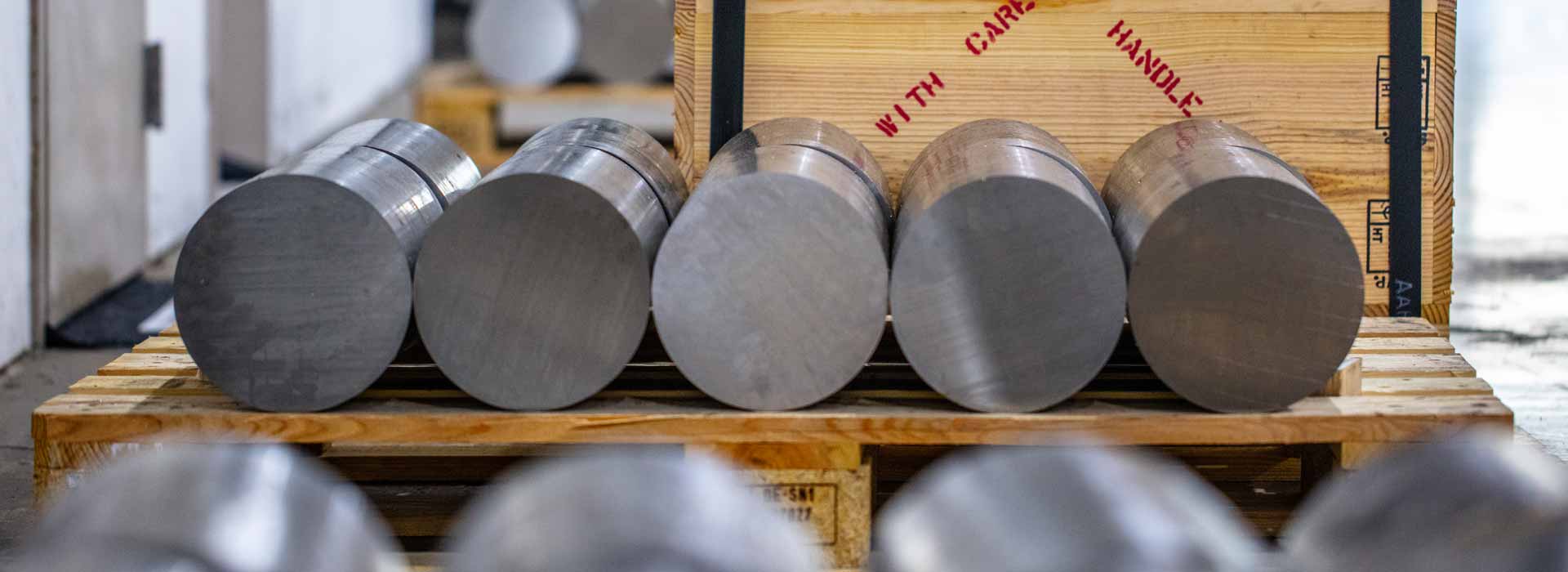(concerning cubic space lattices) - Having equivalent points at the corners of the unit cell and at the centers of its six faces. A face-centered cubic space lattice is characteristic of one of the close- packed arrangements of equal hard spheres.
The phenomenon leading to fracture under repeated or fluctuating stress. Fatigue fractures are progressive beginning as minute cracks and grow under the action of fluctuating stress.
An alloy of iron and manganese (80% manganese) used in making additions of manganese to steel or cast-iron.
An alloy of iron with a sufficient amount of some element or elements such as manganese, chromium, or vanadium for use as a means in adding these elements into molten steel.
Related to iron (derived from the Latin ferrum.) Ferrous alloys are, therefore, iron base alloys.
Direction in which metals have been caused to flow, as by rolling, with microscopic evidence in the form of fibrous appearance in the direction of flow.
Unit stress which exists at any given point in a structural element subjected to load; given as load per unit area.
Finished edges, the final contours of which are produced by drawing the strip over a series of small steel files. This is the usual and accepted method of dressing the edges of annealed spring steel strip after slitting in cases where edgewise slitting cracks are objectionable or slitting burr is to be removed.
Steel that is ready for the market without further work or treatment. Blooms, billets, slabs, sheet bars, and wire rods are termed ?semi finished."
A process of softening a metal by the application of heat from a high temperature flame.
A process of hardening a ferrous alloy by heating it above the transformation range by means of a high-temperature flame, and then cooling as required.
An extremely flat, very smooth, very accurate to gage, polished, hardened and tempered spring steel produced from approximately 1.15 carbon. The name is derived from its common and principle usage.
Supplied cold rolled and annealed. Carbon content .85. Supplied both in coil and flat length. Used to make flat latch needles which are used in the manufacture of knitted goods.
A flat Cold Rolled, prepared edge section up to ?" wide, rectangular in shape. Generally produced from hot rolled rods or specially prepared round wire by one or more cold rolling operations, primarily for the purpose of obtaining the size and section desired. May also be produced by slitting cold rolled flat metal to desired width followed by edge dressing.
The shear stress required to cause plastic deformation of solid metals.
Always visible to a greater or less degree when a longitudinal section has been subjected to Macro etching, indicating the direction of work or rolling.
Kinking or breakage due to curving of metal strip on a radius so small, with relation to thickness, as to stretch the outer surface above its elastic limit. Not to be confused with the specific product, Fluted Tubes.
Defects caused in metal by continued fabrication of overlapping surfaces.
Nicking and breaking a bar by means of sudden impact, to enable macroscopic study of the fractured surface.
A series of relatively short surface scratches variable in form and severity. Refer to Galling
Used principally on iron and steel, means heating the metal to about 100?F. above the critical temperature range, followed by "soaking" at this point and slow cooling below the critical temperature.
Steel sheet or strip, reduced either hot or cold, cleaned, annealed, and then cold-rolled to a bright finish.
(A) No.1 Temper. In low carbon sheet or strip steel, stiff and springy, not suitable for bending in any direction. It is the hardest temper obtainable by hard cold rolling. (B) In Stainless Steel Strip, tempers are based on minimum tensile or yield strength. For Chromium-Nickel grades Full Hard temper is 185,000 TS, 140,000 YS Min. Term also used in connection with copper base alloys and considered synonymous with Hard Temper.
